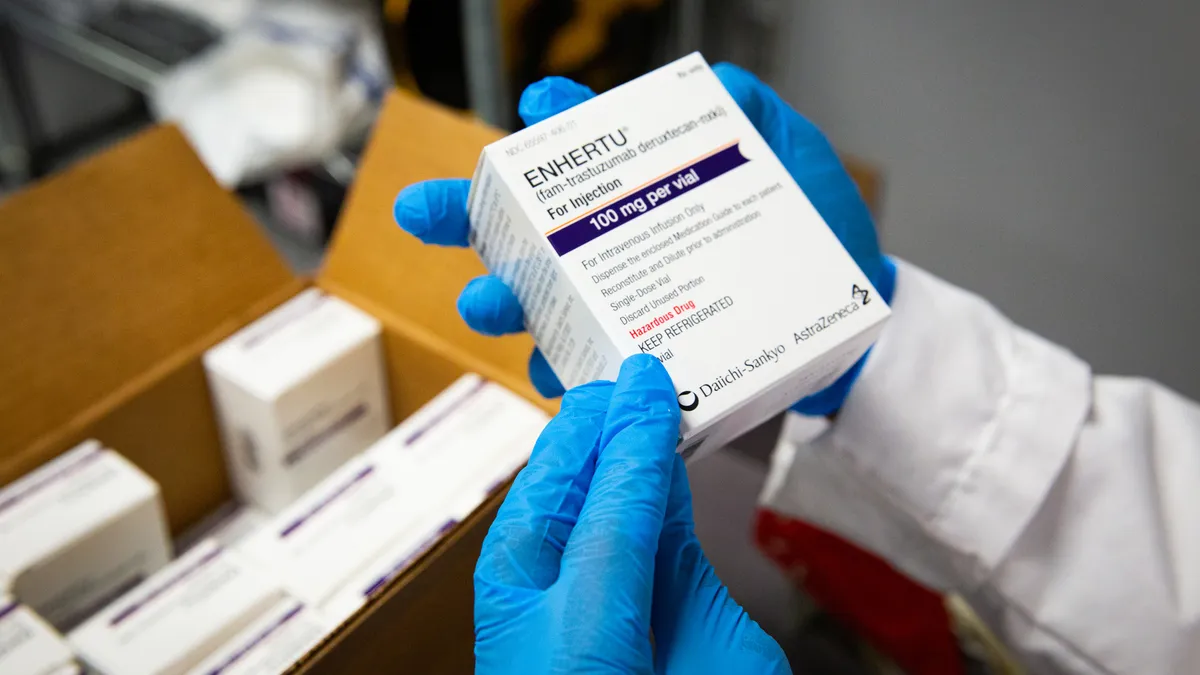To truly engage patients, we must incorporate their community support systems
 No patient travels through their health journey alone. To be patient-centric, and fully engage patients in clinical research, expanding our approach to be inclusive of the broader communities that support them is imperative. Community engagement is all encompassing — beyond the patient, the provider, and the healthcare organization, to the caregiver, faith-based groups, patient advocacy and support groups, to other community resources.
No patient travels through their health journey alone. To be patient-centric, and fully engage patients in clinical research, expanding our approach to be inclusive of the broader communities that support them is imperative. Community engagement is all encompassing — beyond the patient, the provider, and the healthcare organization, to the caregiver, faith-based groups, patient advocacy and support groups, to other community resources.
What is driving the need for better community engagement? It takes an average of 14 years to get a drug to market and roughly $2.5 billion to make that happen. A large part of that cost stems from delays in recruitment. Additionally, diversity of participants that reflects the population is key to medical advancement. In the United States, we need about 58 million people to participate in studies to answer the outstanding scientific questions across the entire spectrum of trials. At any given time, there are between 2 and 3 million participants. More than 70% of patients say if their provider were to offer them the opportunity to participate in research, they are more likely to say yes.1 A key driver to be understood when contemplating how we ensure education, awareness, and ultimately, access to clinical trials. In many underserved populations, concerns about research participation are common barriers that can be assuaged by trusted community organizations.
Addressing the alarming gap in time-to-market primarily driven by prolonged patient accrual requires expanding awareness and access to clinical research as a care option within communities. Integrated Research Organizations (IROs) like Javara are doing so through a more advanced community engagement strategy.
What are Community Engagement Strategies?
Community engagement contributes to both general research awareness and study- specific patient engagement. Communities as a whole need more education around clinical research, its importance, and specifically, why diversity of participants in trials is so vital. As a result of COVID-19 vaccine development, the general public has a better understanding of clinical research and the importance of diversity in trials; now is the time for us to act for the benefit of all. IROs represent a bridge between healthcare partners and community organizations to help change the clinical research narrative through education and awareness. All aspects must be considered, such as understanding a population’s network of influence within the community. Where do patients go to get resources and have their questions answered?
Research participation makes a difference in someone’s life today. However, when it takes years for a drug to get to market, it becomes difficult for participants to connect the dots. Greater Gift, a nonprofit organization that celebrates clinical trial participants by donating a vaccine or meal in their honor to a child in need, reinforces one’s contribution to public health. Greater Gift also engages with other non-profits to serve as a resource of education, creating pathways to spark diversity, awareness and access. For example, Greater Gift partners with groups like the Hispanic League and faith-based organizations to educate communities about clinical research. These partnerships open the doors of understanding so that when presented with specific study opportunities, hopefully by their healthcare provider or healthcare organization, patients are in a better place to understand information and make an educated decision about whether or not participation is right for them.
Community engagement strategies for specific studies are targeted to the desired population. Populations differ based on who they are and what the condition is. It is important to be nimble to be inclusive of certain groups and address their needs. For example, if the condition being studied is high risk and the patient population is complex, then engagement through provider-to-patient communication is critical. In the setting of a common condition such as hyperlipidemia for example, community outreach takes on a larger role. This is especially pertinent when it comes to diversity of the patient population. Using the COVID-19 vaccine as an example, there was a critical mandate around diversity. To be successful, a comprehensive community engagement strategy must be carried out. Here, we are looking to both address the internal needs of patients within the organization and at the same time address those external needs of the broader community. Both are influential.
Advancing Access to Clinical Research as a Care Option
Community engagement ignites a grass roots initiative to drive increased access to clinical research as a care option — CRAACO. CRAACO is a way of truly caring for the patient as a whole person through an option that feels exclusive and special. If we intend for research to be a care option for all, we must address expanded access.
IROs by nature become part of the care team and through collaboration with healthcare partners, they achieve shared goals of enhancing the patient-provider experience, improving quality outcomes for patients, and reducing the cost of care.
Strategically, IROs support the value imperatives of a healthcare organization through clinical research being offered to providers and patients; connecting the forces that drive the healthcare organization to think of clinical research as part of their overall population health strategy. The term “population health" itself demands a better community understanding and focus. Bringing clinical trials into a healthcare organization allows the group to offer care that includes high touchpoints and accountability that correlates to the concept of value-based care and the improvement of care, cost, and ultimately, outcomes.
Sometimes participating, even for those interested, is a challenge due to geography. Part of a strategy of being intentional includes reducing the burden of being in a trial. Burdens are not always the same to different populations, however. For some groups, lessening the in-clinic touchpoint would be a positive. In a particular clinical trial, however, when given a choice, 70% of patients opted for an in-clinic visit over a virtual option.
That means choice is important. The burden could be the time of day they can be seen or a lack of transportation. Partnerships with transportation services such as Uber Health can assist with this. Community engagement allows research organizations to understand the challenges and deploy mitigation tactics that reduce barriers to participation, thereby increasing diversity.
Achieving Diversity, Striving for Inclusivity
Driving for diversity is one of the forces behind a focus on community engagement. Once we improve diversity of enrollment, we cannot stop there. We must be intentional about creating a safe, comfortable place for all. Research study teams that reflect the population and who also speak with patients in native languages are key. This goes a long way in ensuring that patients and caregivers are comfortable and trust the study team.
Patients who have participated in trials are the best advocates. When participants share their experience in the community, we can begin to build a network of ambassadors at a neighborhood level.
Get Feedback and Act On It
During a patient’s clinical trial journey, the importance of seeking continual feedback cannot be overstated. Understanding their experience is key to ensuring the experience is a stellar one. Regular monitoring of patient feedback informs study teams and impacts improvement of systems and processes that enhance more than just the experience, it changes the narrative. Results of those course corrections are clear in subsequent feedback when action is taken; contributing to why almost 90% of patients report that they would participate in another trial.
Keeping participants connected with the broader research community through newsletters and social media also contributes to the patient narrative being a positive one. Their overall experience, regardless of therapeutic benefit or specific outcome, is going to be their motivation to tell somebody else about their participation and ultimately encourage others to participate. For many, their participation has to do with doing good for others even if they were originally motivated by their own healthcare need. Recently, as part of the patient feedback process, a patient shared, “My doctor recommended I participate, and I’m so glad to be part of the solution." This is indicative of the experience we need in order for others to become part of the solution.
Conclusion: Be Intentional
By being intentional about our engagement strategies and reaching further into communities, we will be more successful at increasing clinical trial participation inclusive of patients who are representative of the population.
Note:
1 Research America. An Alliance for Discoveries in Health. Public Perceptions of Clinical Trials. July 2017. https://www.researchamerica.org/sites/default/files/July2017ClinicalResearchSurveyPressReleaseDeck_0.pdf. Accessed May 10, 2021.
Javara, Inc., is an Integrated Research Organization providing comprehensive clinical research infrastructure to large healthcare organizations, in order to reach broad patient populations with clinical trial options at the point of care. Javara’s unique model aims to bridge the gap between pharma and healthcare and transform the clinical trial landscape. Javara is the trusted clinical research partner to over 5,000 physicians and over 4.7 million patients.
For more information, visit javararesearch.com


















